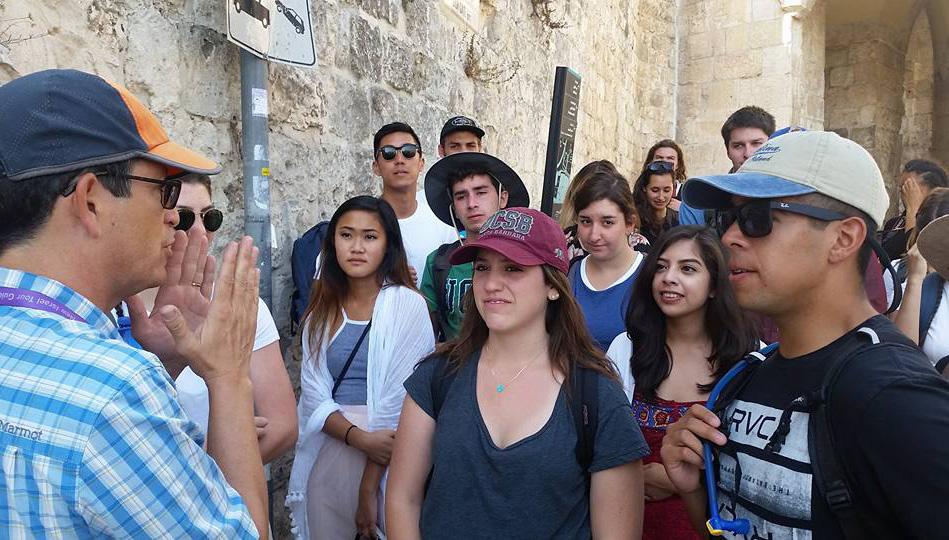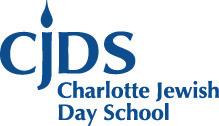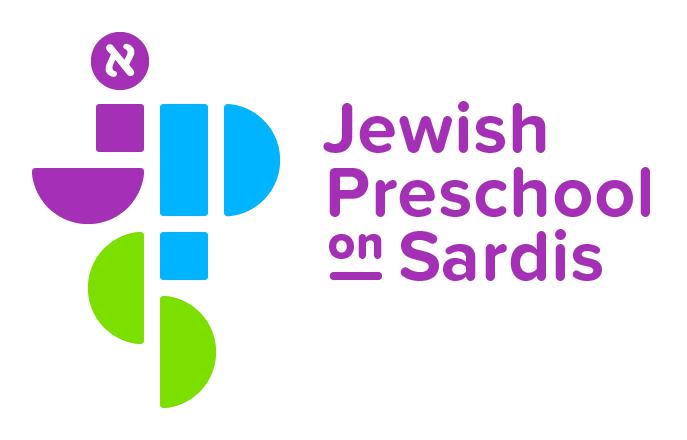
14 minute read
Mike Hollander Lives His Zionist Ideals Every Day as a Tour Educator
Charlotte Jewish News April 2021
By Rabbi Tracy Klirs
Thousands of tour guides work in Israel. A tour guide can enhance your Israel experience immeasurably. Expert guides save you precious time by pre-booking sites, transportation and more, and by knowing where the best of everything can be found. They also add insight and context far beyond what you could get on your own from a guidebook or an internet search. Some tour guides are generalists. Some tour guides focus on a particular area of interest. One of Israel’s most sought-after tour guides is Mike Hollander, but tour educator is a more accurate term. Mike himself says, “I teach about why Jerusalem is holy to Judaism, Christianity, and Islam. If you want a sightseeing tour, you need to find someone else.”
Rabbi Tracy Guren Klirs, a freelance rabbi and writer in Charlotte, interviewed Mike from his home in Modi’in over Zoom to talk more about his love of Israel and passion for education. In addition to their shared passion for Judaism, Israel, Jewish history, and Jewish peoplehood, Klirs and Hollander share a Vancouver, BC, connection — it’s Klir’s birthplace and where Hollander grew up. And full disclosure — they happen to be first cousins.
Here’s Rabbi Klirs’s interview with Mike:
Rabbi Tracy Klirs: Growing up in Vancouver, what were the things that drew you to Zionism and propelled you to make Aliyah?
Mike Hollander: I would definitely say that there were three components to my Jewish identity: First was my home life. We didn’t keep kosher, but we didn’t have “high treif” in the house or mix milk and meat. Second, we kept the Jewish life cycle and annual cycle of events. I went to Jewish day school for elementary school from first through seventh grade. And third, I went to Jewish summer camp from the age of 10.
And my secondary public school was one-third Jewish, so I was always in a Jewish milieu. And then we came to Israel for my bar mitzvah, and then I did a gap year, before it was even called a gap year, on Kibbutz Grofit in the Aravah after I finished high school in 1982.
My Jewish identity was always Israel-centric. My brother, Yitz, was born in Israel, my parents had made Aliyah (but returned to Canada before I was born), my mom was into Israeli folk dancing, and we had a lot of Israeli friends. So it was very much this sense of being Jewish through Jewish tradition, whether through the home, the school, or the synagogue; and Zionism. And then when I spent the year in Israel, I really felt at home. But I wasn’t sure whether it was simply because I was away from home for the first time at the age of 18 or if I really fell in love with Israel, but I had a great year.
I returned to Canada to earn my undergraduate degree, and as soon as I graduated from York in 1986, I went back to Israel for another year, this time for a master’s in Middle Eastern studies at Tel Aviv University. It was a non-degree granting program for people from the United States mostly, plus a couple of Canadians. That was the year I decided that this is definitely the place for me, and that’s when I decided to make Aliyah.
RTK: How long after that did you actually make Aliyah, and what was the process?
MH: After the year in Tel Aviv, I went back and worked in the national office of Habonim in New York for a year. Part of what I was doing was developing curricula for national programs, but perhaps more importantly, I was
working in building the garin. We were 36 people, divided into three groups. My group went in the second stage in September of 1988.
RTK: Where did your group go?
MH: We went to Kibbutz Ravid, which is between T’veriah (Tiberius) and Tzfat. Habonim already had four or five established kibbutzim, but we were young and idealistic and wanted to start our own community, one that would be open to liberal Jews, not only from Habonim but also from the Reform and Conservative movements, Young Judaea, Hashomer Hatza’ir. We wanted to have a synagogue, to keep kosher, we were open LGBTQ people. My future wife, Michele, was in the group.
After a couple of years, a lot of the people we had come with realized it wasn’t for them, whether it was Israel, the kibbutz, missing their family, going on to complete their degree, or whatever else, and we no longer had a critical enough mass to sustain the kibbutz. By this time Michele and I were a couple. We decided we wanted to stay in Israel, so we moved to Jerusalem in 1990.
RTK: How did you get involved in guiding, what was the process to become trained and certified, and what inspired you to make this your career?
MH: I was always into education, especially informal education. My undergraduate degree was in history, and half of my graduate degree was in Middle Eastern Studies. When I first moved to Jerusalem, I worked in fundraising for the Jerusalem Foundation for a couple of years. A friend I had made Aliyah with had taken the tour guide course, and the idea of being a madrich (which in Hebrew means both guide and camp counselor), as I had been in the Habonim youth movement, was very appealing to me. It’s also a great way to get to know the country. So in 1992, after living in Israel for four years, I cut my work down to 80% and took the two-year tour guide course, which entailed a full day tiyyul (hike/tour) each week and three nights a week of night school. During that time, Michele and I got married and had our first kid.
It’s a unique course of studies — Limudei Eretz Yisrael — I don’t think there’s any other country in the world that has something like it. It’s a combination of Tanakh and New Testament and Koran, together with archeology and history — from the ancient kingdoms of Egypt and Mesopotamia to the early Western civilizations of Greece and Rome to the Crusades. It’s world history in this tiny, tiny little land. And then there’s climate and flora and fauna and so many different fields.
To be a licensed tour guide, you have to work with kids up to high school age. So in the summer, I was doing walking tours with teen groups and working for Archeological Seminars. The day I finished and got my license in June of 1994, I quit my fundraising job and have been working as an educational tour guide ever since.
But to return to the question of why I decided to go into this field, for me tourism is a form of education, so it was a natural continuum from what I had done before I made Aliyah, especially as a youth leader and camp counselor in Habonim. And informal education is what I do as a tour guide — actually the term we use now isn’t tour guide, but tour educator. The Hebrew term is moreh derekh – a teacher of the way, but in the sense of someone who walks the land. It goes all the way back to the Tanach — when Abraham comes to the land of Israel, God says, “kum hithalekh ba-aretz” (“arise, walk about the land” Gen. 13:17); it’s not “kum teileikh ba-aretz,” it’s in the hitpa-eil (reflexive) because there’s something that happens (to the individual). It’s not just going to Israel because “it’s on my bucket list.”
RTK: And you obviously love doing it.
MH: You get the opportunity to find out who you are and what you can do, and definitely an informal education teacher is who I am. During the coronavirus pandemic, with no tourism, I have colleagues who are taking courses to become real estate agents or other careers. But what else am I going to do? This is who I am. There are thousands of tour guides in Israel, and then there are informal educators who work as tour guides. So my business card says, Mike Hollander, Jewish Educator, Tour Guide. There’s a difference.
RTK: Can you give me an example of that difference?
MH: Currently because of the pandemic, I’m doing virtual tours only. I just did one for a senior citizens’ club in Montreal. A huge number of people sign up for this and pay for it. It’s advertised on its website as virtual travel to Russia. Five minutes into the tour, someone wrote in the chat, “Enough of the talking and the slides; where are the movies of the sites?” I had to explain that this is a thematic approach to Jewish life in Russia through the prism of St. Petersburg and Moscow.
I had to turn a gig down recently because they just wanted a tour of the sites. I had to explain to them that I don’t think I’m the right guy for them. I teach about why Jerusalem is holy to Judaism, Christianity, and Islam. If you want a sightseeing tour, you need to find someone else.
RTK: What were you doing typically in the early years of your career? What was the industry like then, and who was your clientele?
MH: I started out working with two groups: Jewish youth movements like NFTY and similar groups for their summer programs and with universal backpacking tours for young adults, and that got me much more familiar with the field. But eventually I was introduced to an organization called DA’AT Educational Expeditions. I led my first tour for it in March of 1995, and I haven’t stopped working for it since. The company was started by a guy who was a shaliach (emissary) and had worked in education for many years, and the approach to tourism was very much an educational one rather than just a sightseeing approach.
There are infinite reasons for travel, and there are certain companies that cater to different fields of interest. The high-powered business executives want one thing, there are evangelical or Catholic groups that go on Christian pilgrimages, and there are Jewish groups that want to have a Jewish experience. For me, understanding who the client is and customizing a tour to connect them to the place becomes the experience. You have to make a subjective choice as to what information you’re going to share and what you’re not going to share, depending on your client. Connecting with your group beforehand is very important. For instance, if I’m leading a tour of Auschwitz, it’s important for me to know whether any people in the group had relatives who were murdered there. Any time you visit any place, it’s about connecting the place with the person you’re guiding or teaching.
RTK: Since you took the tour guide course, what has changed?
MH: At the time there were only three courses, one each in Jerusalem, Tel Aviv, and Haifa, all run by the Ministry of Tourism. Now things have changed. There are a lot of private courses, and you can take the class in English. Back then there were a lot of Russian speakers in the class — this was 1992-1994, during the time of the big Aliyah from the FSU. I don’t know if you’re aware, but the second largest group of tourists to Israel after the U.S. is people from the FSU. RTK: Wow! I had no idea! MH: Think about it, we’re just three to four hours away from Moscow, and there are 300 million people between Ukraine and Russia and Kazakhstan and Uzbekistan. If you lived in St. Petersburg in January, you’d want to get out of there if you could afford it, and what better place to go to for a week than Eilat? RTK: What else has changed? MH: In the old days, the tour guide basically said [and here Mike shifts into his best fake Hebrew accent], “I’ll tell you what you need to see.” Nowadays, I’ll have a two-hour meeting with the client to find out what they want to achieve, and from there I’ll create what I call the story line. The nature of the conversation has changed; the people who are coming have changed.
RTK: To be proficient in your field, you need to have not only mastered the geography and the history and the topography and every little detail about Eretz Yisrael, but also you have to know your Tanach backward and forward and just so much information. So how do you keep all that in your head, and if you ever need crib notes, what do you use?
MH: There was a time when I’d carry a Tanakh and a New Testament. But now (holding up his phone) I’ve got Sefaria. Everyone’s got their backpack, and in it you’ve got all kinds of stuff: images of an artist’s reconstruction of the Temple of Herod, and I’ve got a whole file cabinet with visual aids, texts, etc. that I can select from. But after 27 years of doing this, I have all these sound bites in my head. If you ask me about Masada, I can probably talk for two hours without referring to any texts or resources. I used to carry a Tanach with all these little Post-it flags. But now that I’ve done it hundreds of times, I can cite chapter and verse by heart. So it’s memory,
it’s a sense of geography, and this (holding up his phone again) has helped a lot in terms of WAYZ. And it’s the art of guiding: feeling comfortable with what you know and with what you don’t know. Sometimes I get questions that I can’t answer, and I say, “I don’t know.” You don’t need to be an encyclopedia; everyone has an encyclopedia at their fingertips on their phones. It’s about taking the knowledge that you do have and creating that narrative, that story and those points of resonance with your visitors. And every person has a different connection, and that I think is the biggest challenge to me as a tour educator.
RTK: And beyond the required annual hishtalmut, you got some additional training?
MH: We went on shlichut to England for the Jewish Agency from 2001to 2004, and while I was there, I found out about a distance learning master’s program with the Cambridge Institute for Jewish-Christian Relations, and I had always wanted to go back and finish my master’s. In Israel, everybody was an expert in Jewish history or Holocaust studies, but there weren’t many programs in Jewish-Christian Relations. So I did the first year of the program while we were in England and then came back and finished it in Israel. By exposing me to an area I wasn’t that familiar with, I think it enhanced my guiding and enriched my ability to have a conversation with interfaith groups and Christian groups. It exposed me to a conversation that’s a lot deeper.
RTK: What was the most memorable group you guided?
MH: I’ve guided hundreds of groups, a lot of billionaire Jewish philanthropists, a handful of governors, even the CEO of IBM, but definitely the most interesting was Bono, the lead singer of U2. It was just him and his wife and their two youngest children who were about 10 and 12 at the time. They came to Israel on a private tour, very under the radar. I spent five days with them, and it was fascinating because here was this really famous person, and as we were walking people would recognize him, and he would tell them they could take pictures of him, but not of his kids, and only when he finished what he was doing, etc., but he was very gracious — a real mensch. His background is that one of his parents is Protestant, and one is Catholic, and he knows his Bible very, very well. On the second or third, day I loaned him two of Yehudah Amichai’s poetry books. I told him, “I know you’re into poetry and the Bible, so here is the most famous modern Israeli poet.” And he loved the poems. He really challenged me with the questions he asked. A lot of famous people come to make contacts, but at the end of the day he was not there to make peace in the Middle East or to solve the AIDS crisis in Africa; he was there because it was one of the places he wanted to go and have a private family vacation. To be able to have conversations with him without all the paparazzi around — that was my greatest highlight.

Mike Hollander with Bono










